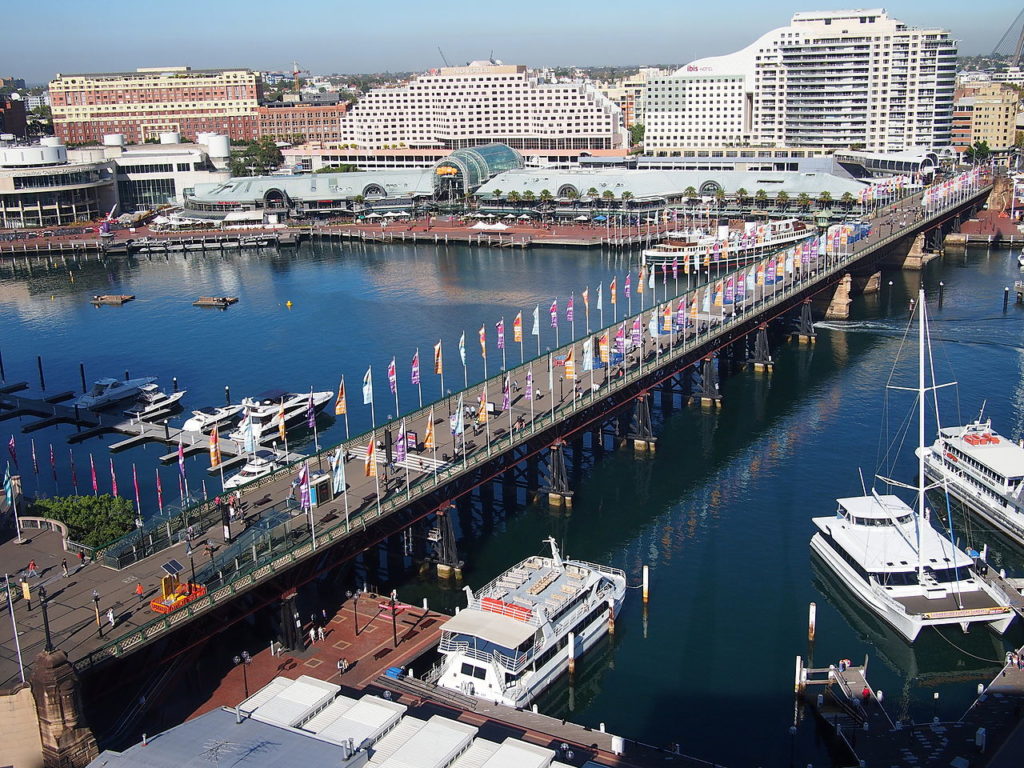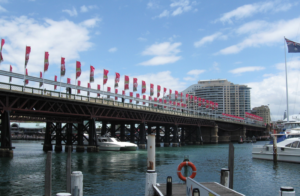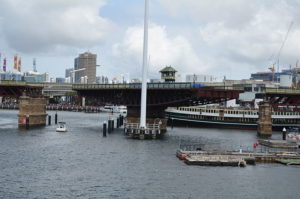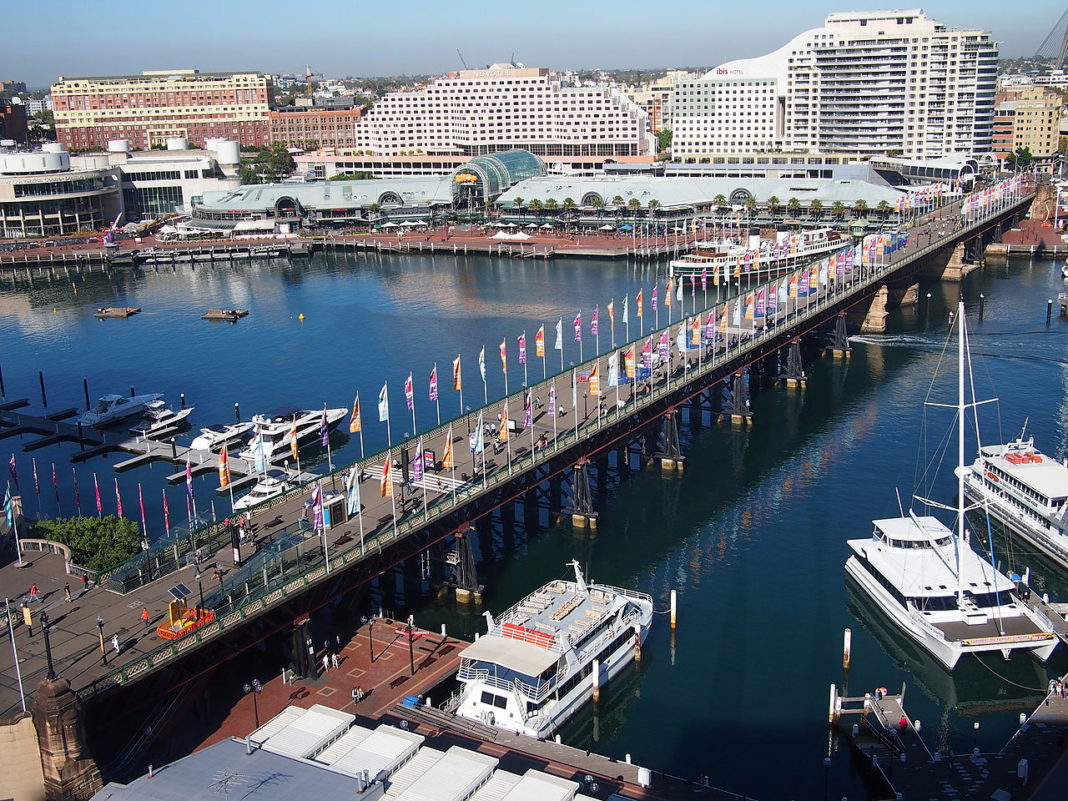The Pyrmont Bridge, a heritage-listed swing bridge across Cockle Bay, is located in Darling Harbour, part of Port Jackson, west of the central business district in the City of Sydney local government area of New South Wales, Australia.

The first Pyrmont Bridge was opened on 17 March 1858, and was a wooden pile bridge with an iron center ‘swing panel’ to allow ships to pass. The wooden Pyrmont Bridge vanished with the construction in 1902.
Opened in 1902, the bridge initially carried motor vehicle traffic via the Pyrmont Bridge Road between the central business district and Pyrmont. Since 1981 the bridge has carried pedestrian and bicycle traffic only, as motor vehicles were diverted to adjacent freeway overpasses. The bridge was added to the New South Wales State Heritage Register on 28 June 2002, the centenary of its opening.

The Pyrmont Bridge is 369 meters. The bridge is made up of 14 spans with Australian ironbark timber used on 12 spans, while the two central spans, which swing, are constructed from steel. The swing span weighs 1,000 tons (1,100 short tons) and is supported on a base made from concrete and Hawkesbury Sandstone. The base is filled with mass concrete and weighs 6,800 tons (7,500 short tons). The swing span is 13 meters in diameter and 19 meters deep. The water is 6.5 meters deep and the base extends a further 10 meters below the sea floor.

Pyrmont Bridge takes approximately 60 seconds to open completely to 83 degrees. It has to be opened for vessels more than 7 meters high. Vessels/barges up to 21.5 meters wide can pass through the channel once the Bridge has been opened. Pyrmont Bridge is driven by the original two 50 horsepower (37 kW) 600 V DC General Electric type 57 electric motors. Manual drum-type General Electric tramway controllers are used to drive the motors for the swing span and gates. Power to operate the bridge was originally drawn from the Ultimo Power House (now the Powerhouse Museum).
According to wikipedia















